Nature DefinitionIn its most literal meaning, "nature" refers to the natural world, physical world, or universe of matter. The term "nature" may be used to describe both universal life and the occurrences of the physical world (Actual present-day elements that a person can truly see, sense, smell, feel, or taste). It has a broad scope, from the subatomic to the cosmic (related to space). 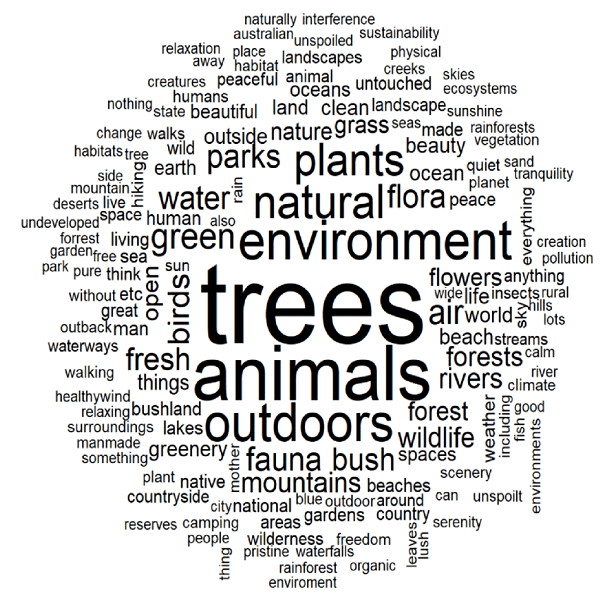
The word "nature" may apply to things like weather, processes in the earth's crust, living things like plants and animals, and things like matter and energy in physics. The phrase is often used to describe the "natural environment" or wilderness, including wild animals, stones, forests, beaches, and other landscape features that people have not significantly changed or survived despite human influence. For instance, unless specifically referred to as "human nature" or "the whole of nature," manufactured items and interactions between humans are often not regarded as aspects of nature. According to this more conventional definition of "nature," there is a difference between the natural and artificial components of the Earth, with the artificial components being those created by a human awareness or mind. Nature comprises all the world's non-human manufactured objects, including all the creatures, plants, and other living things, as well as every one of the natural events and occurrences. The broadest definition of nature is the physical universe or planet. The word "nature" can be relied on to describe both the natural occurrences in the material world and life as a whole. The research into and understanding of nature is an essential, though not the only, element of science. Even though humans are an aspect of nature, human activity is sometimes seen as a distinct category from other natural events. Theories in HistoryThe concept of "nature" is the foundation of science, serving as both its symbol and its most deep connection to human cultures. While protecting nature has become an urgent societal difficulty, the concept of nature still needs to be clarified. Here, we examine the word's historical meaning, origins, and multiple consequences in contemporary European languages. During its history, this term has collected a variety of theories, some of which are inconsistent. One of the main current Western definitions of "nature" is what is opposed to humans. This definition has recently become prevalent in public policy, conservation science, and ethical issues related to the environment. It is highly uncommon and fresh, and it contradicts most other conceptions of nature, including historical and modern foreign ones. When formulating regulations, nature preservation should include this conceptual variety, including the relevance and probable inaccuracy of the dominant Western concept at the time. Now let us see some theories made in history by researchers and authors through research and observations. In 1869, the title "nature" was founded by Alexander Macmillan and Norman Lockyer. The Early Conservation Era, which gave rise to the environmental ethics movement, included contributions from American environmentalists John Muir (father of national parks) and Rachel Carson (She opposed the use of synthetic chemicals, and as a result of her studies, pesticides were declared illegal nationally.) due to their protests people become aware, and nature has been greatly benefitted. "To prevent ourselves from becoming another useless panchreston (a suggested explanation that attempts to handle a complicated issue by taking into consideration every scenario that might arise but usually ends up being very simplistic and broadly conceived to be of any value), the alluring idea of "nature" has, throughout the years, been utilized to describe an increasing number of various objects as well as their opposites "said by Simberloff in his infamous book the "balance of nature". "Scientists must depend on mental models and theoretical notions since their understanding of nature is inadequate and will always remain so; nonetheless, they must be recognized for what they are and have a clear definition. The question of what precisely the term "nature" means has led to certain misunderstandings as well. The clarity in discussions regarding the social construction of nature may be greatly improved by drawing differences between various meanings of that word. The importance of grasping concepts of nature as constructed from the standpoint of the philosophical and political issues of suggesting that nature is socially constructed, unpredicted, or random. These are challenging philosophical and political concerns, and the diversity of constructionism shows that there are several ways to respond to them," said Demeritt in 2002. However, "nature" is not a simple word and fits into the description of a vague concept, making it a construct of the mind as opposed to a physical idea that requires definition in background information (Ellen, 1996). Understanding the concept of "nature" and how it relates to everyday items and social initiatives is essential for researching conservation sciences and the policies that result from them(Larr�re, 2015). However, these studies have previously shown how "nature" is ill-defined and has undergone several meaningful revisions throughout history(Lenoble1969). Additionally, punctuation studies revealed that similar to "wilderness," the term "nature" does not always translate into various languages or might have multiple meanings depending on the language being used (Philippe Descola, 2005). The beginnings and development of the word "nature" in European languages, from its early Greek analogous to Latin and then to contemporary meanings, presenting that this term, already considered doubtful and vague from its most historically intended purposes, intensely altered in importance at various points in its history, which is the root of its present uncertainty. In conclusion, we contrast the well-performed collection resulting from these evaluations with the modern scientific conception of nature in the field of conservation to determine whether or not this interpretations variety presents a challenge to or an opportunity for preserving "nature" worldwide scale. EtymologyThe word nature, which is taken from Old French nature and formerly denoted "birth," originates from the Latin phrase natura, which translates as "inborn essential qualities." Natura is primarily implied in ancient philosophy as the Latin equivalent of the Greek term physis, which initially refers to the deep-rooted ability of creatures, plants, and other parts of the universe to evolve independently. The view of the whole world of nature, or the physical universe, represents one of the various expansions of the fundamental concept. It started with a few core definitions of the term "nature" offered by pre-Socratic philosophers (though the phrase had an active aspect at the time, especially for Heraclitus). It has been steadily increasing in popularity ever since. Earth and NatureThe natural world of Earth, the only planet proven to sustain life, is the focus of several scientific criteria. Apart from being the biggest terrestrial planet in the Solar System, it is also the fifth largest overall and the third nearest to the Sun. 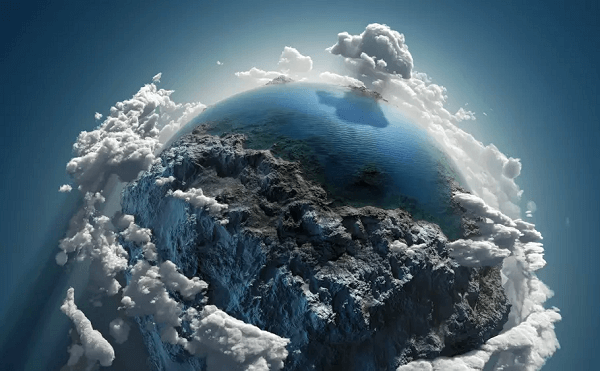
Its prominent climatic characteristics are its two sizable polar areas, two comparatively small temperate regions, and a sizable equator tropical to the subtropical region. Seventy-one per cent of the earth's surface is covered by saltwater oceans. With most of the populated land located in the Northern Hemisphere, the remaining land comprises continents and islands. The initial circumstances on Earth have been preserved via the geological and biological processes of evolution. Numerous tectonic plates that are steadily and continuously moving apart make up the outer layer. The inside is still operational, with a core loaded with iron and a thick plastic coating. What does Nature do for Us?Without a doubt, Earth has always been an offering planet. The natural environment around us has always given humanity everything they need to exist and prosper, including food, water, medicine, materials for housing, and even biological processes like climate and nutrient cycles. 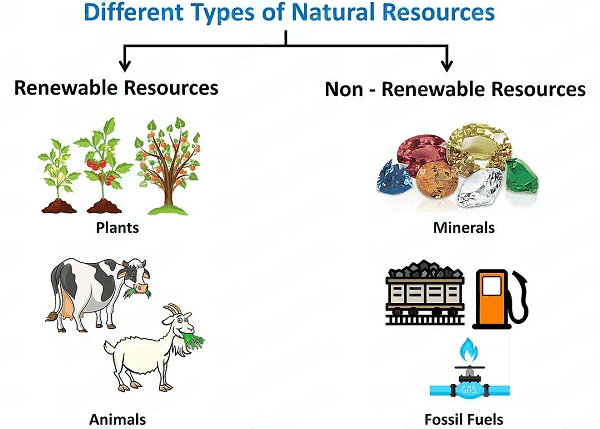
The realization of such advantages spans back thousands of years, and maybe even further if one considers the cave paintings at Lascaux as proof, according to scientists who now refer to these offerings as "ecosystem services." However, it is easy and often convenient to overlook that nature still understands even as it gradually diminishes due to how cut off from it we are. Although technology and industry development may have somewhat distanced us from nature, it has not altered how much we depend on it. The vast majority of what we consume and utilize daily still results from multiple encounters with nature, many of which are dangerous. In addition to such tangible goods, the natural world also provides spirituality, appearance, and the arts, which are less tangible but no less valuable offerings. 1. Climate, Weather, and AtmosphereOne of the essential components in maintaining the planetary environment is the atmosphere of the Earth. The Earth's gravity keeps the thin gaseous layer that surrounds it in place. The composition of dry air is 78% nitrogen, 21% oxygen, 1% argon, and various other inert gases, along with carbon dioxide and other gases. However, air also includes varying amounts of water vapor. At the planet's surface, the atmosphere's pressure has a scale height of roughly 8 kilometers when it begins to decrease with altitude slowly and has decreased by a value of e (a mathematical constant equal to 2.7). The quantity of ultraviolet (UV) radiation penetrating the surface is significantly reduced by the ozone layer of the Earth's atmosphere. UV radiation easily damages DNA, hence protecting life at the surface. Additionally, the atmosphere holds onto heat at night, lowering daytime variations in temperature. 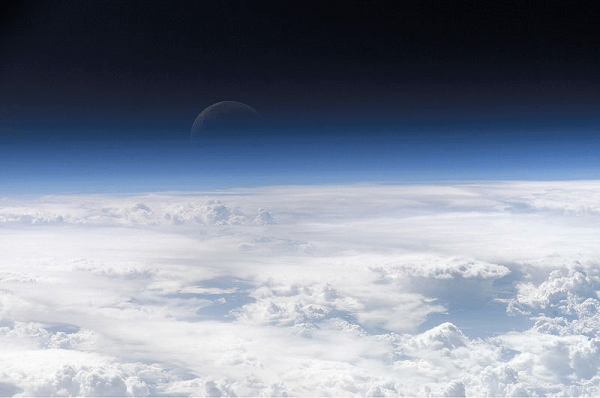
The terrestrial climate is a relocation mechanism for dispersing heat and appears nearly solely in the lower section of the atmosphere. The ocean currents, particularly the major thermohaline flow that moves heat from equatorial seas to Polar Regions, are a further crucial variable in determining weather. In the temperate zones, these breezes aid in balancing the temperature variations between winter and summer. Additionally, the tropics would be considerably hotter and the poles much colder, lacking the redistributions of heat energy caused by ocean currents and the atmosphere. Weather impacts may be both positive and negative. Weather extremes like storms, hurricanes, and cyclones may cause great destruction along their tracks using much energy. Because surface vegetation has developed a dependency on seasonal weather fluctuations, unexpected alterations that last just a few years may significantly impact the vegetation and the animals that depend on its growth for nutrition. An extent of long-term weather patterns is the planet's temperature. Ocean currents, surface albedo (sun energy reflected off the earth's surface), greenhouse gases, fluctuations in solar brightness, and modifications to the planet's orbit are only a few examples of the many variables known to affect the climate. According to historical records, the Earth has experienced extreme climatic shifts, including ice ages. The natural world has a role in regulating the temperature on Earth. While enormous amounts of carbon are absorbed by phytoplankton in the ocean, considerable quantities of carbon are left behind in ecosystems including peatlands, mangroves, and rainforests. While reducing the release of greenhouse gases is important in the face of climate change, current research suggests that ecosystems on Earth may also have an impact on weather. According to recent studies, the Amazon rainforest acts as its own "bioreactor," producing clouds and precipitation due to the abundance of plant components in the area. Numerous factors, especially latitude, have an impact on a region's climate. A latitudinal length of the surface with equivalent climatic features is referred to as a climate area. These regions range from those with tropical equatorial climates to those with polar climates at their northern and southernmost extremities. The tilt of the Earth's axis about its orbital plane, which causes the seasons, also affects the weather. As a consequence, throughout both the summer and the winter, one region of the globe is constantly more vulnerable to the sun's rays. This exposure varies periodically due to the Earth's orbit. At any one time, weather patterns are opposite in both the northern and southern hemispheres. As a result of the chaotic nature of the weather, which is readily impacted by even minute environmental changes, accurate weather forecasting is currently only achievable for a few days at a time. On a global scale, two things are happening at the moment: (1) The average temperature is increasing, and (2) Regional climates have been significantly altering. 2. Aquifers on EarthEvery known kind of life depends on the chemical compound water, which comprises hydrogen and oxygen. Water has a solid state, ice, gaseous state, water vapor, or steam. However, in most contexts, "water" primarily refers to its liquid form or condition. 71% of the planet's outermost layer is covered with water. 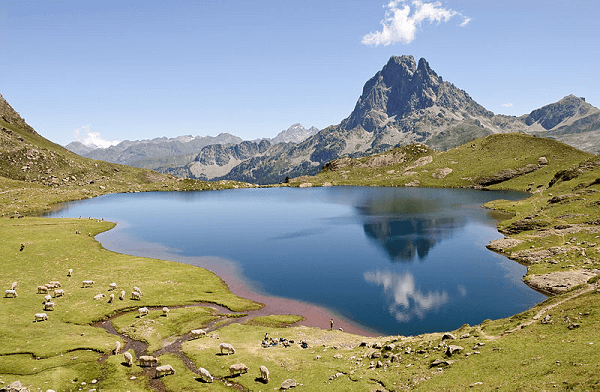
Having 1.6% of it underground in aquifers and 0.001% in the atmosphere as steam, mists (made of solid and liquid water particles floating in the air), and rainfall, water resides primarily in the oceans and other big bodies of water on Earth. 97% of surface water is found in oceans, 2.4% in glaciers and polar ice caps, and 0.6% may be discovered across various bodies of surface water on land, such as ponds, lakes, and rivers. A tiny fraction of the water on Earth is also present in manufactured goods and biological structures. 2.1 Oceans A huge body of salt water, or ocean, is a critical element of the hydrosphere. A constant body of water often separated into many primary oceans and smaller seas, the ocean covers about 71% of the Earth's surface or over 361 million square kilometers. This region is nearly 3,000 meters (9,800 feet) deep in more than half of it. Most saltwater has a salinity between 30 and 38 parts per thousand (ppt), with an average marine salinity (3.5%). These waterways comprise one large, linked body of salt water, frequently referred to as the World Ocean or global ocean, while commonly being recognized as multiple "separate" oceans. Oceanography is fundamentally dependent on the idea of the world ocean as an uninterrupted mass of water with relatively unrestricted interaction among its components. The primary oceanic sections, which are the Pacific Ocean, the Atlantic Ocean, the Indian Ocean, the Southern Ocean, and the Arctic Ocean (in diminishing order of their size), are influenced by the continents, a number of archipelagos, as well as additional factors. The equator could further split the Pacific and Atlantic into northerly and southerly sections. Seas, gulfs, bays, and various other names are used to describe smaller oceanic areas. Additionally, there exist salt lakes, which are smaller salty bodies that are isolated and are not linked to the World's Oceans. The two most well-known instances of salt lakes are the Aral Sea and the Great Salt Lake. 2.2 Lakes A lake, derived from the Latin word lacus, is a landform or physical structure localized to the lowest part of a basin (another sort of terrain element; it is not worldwide) and flows slowly, if at all. When a collection of water is inland, not in the ocean, bigger and more profound than a pond, and nourished by a river, it is referred to as a lake on Earth. Titan, Saturn's giant moon, features lakes of ethane that are almost certainly combined with methane, making it the only planet except Earth confirmed to have lakes. It is uncertain if Titan's lakes are fed by rivers, despite the planet's surface being formed by numerous river beds. On Earth, natural lakes are often located in steep terrain, rift zones, and regions that have recently or currently experienced glaciers. Other lakes may be discovered in endorheic basins (These are drainage basins that often store water and do not let drainage into outside sources of water like rivers or oceans. On the contrary, drainage congregates into lakes or swamps (everlasting or cyclical, that maintain balance via evaporation) or beside established riverbeds. Due to irregular drainage systems from the previous Ice Age, numerous lakes exist in various parts of the planet. All lakes are transient during geologic time spans because they gradually fill with silt or overflow their containment basins. 2.3 Ponds A pond is an accumulation of still water created naturally or artificially and is often smaller than a lake. Ponds are a broad category of bodies of water created by humans, including water gardens intended for ornamental purposes, fish ponds for fish breeding, and solar ponds intended for preserving thermal energy. The current speed distinguishes ponds and lakes from streams. Ponds and lakes have mild wind-driven currents and thermally induced micro currents, whereas streams' currents are seen. These characteristics set ponds apart from other aquatic landscape features like tide and stream pools. 2.4 Rivers A river is a naturally occurring waterway that flows toward an ocean, lake, sea, or river. Freshwater makes up most rivers. Some rivers disappear into the earth or dry up entirely before reaching another water source. There is no universal standard that establishes what may be referred to as a river; various names, including stream, brook, rivulet, and rill, can also refer to small rivers. Small rivers often have geographically distinctive names; for instance, Burn is found in Scotland and the northeast of England. Due to the ambiguity of the terminology, it is only sometimes valid that a river is more significant than a stream. Within the hydrological cycle, rivers play a role. In most cases, precipitation is converted into water that enters rivers by precipitation that falls onto the ground, groundwater recharge, springs, and the release of water that has been held naturally in ice and snow packs (i.e., from glaciers). 2.5 Streams A stream is an assemblage of water guarded by a bed, and the stream banks and flows with a current (movement in a particular direction). A stream is a waterway less than 60 feet (18 meters) wide in the United States. Streams play a crucial role in the water cycle, act as sensors for groundwater recovery, and act as passageways for migrating fish and other animals. A riparian region is a term for the ecological area that surrounds a stream. Considering the Holocene extinction's current state, streams are essential in bridging scattered ecosystems and preserving biodiversity. Surface hydrology, which broadly refers to the study of streams and rivers, is a key component of environmental geography. 3. WildernessGenerally, places that have yet to be thoroughly altered by human activity are considered wilderness. Wilderness, as defined in further depth by the WILD Foundation, is "the most untouched, unspoiled, wild natural areas left on our planet?those remaining truly wild areas that people do not control and have not been constructed with roads, pipelines, or other industrial infrastructure." Wilderness areas may be discovered even in metropolitan areas, along rivers, gulches, or other underdeveloped places. They can also be encountered in preserves, estates, farms, conservation preserves, ranches, national forests, and national parks. Parks and wilderness regions are crucial for the enjoyment, ecological research, conservation, isolation, and survival of certain species. Wilderness places are essential for the human soul and creative process, according to certain naturalist writers. They are also seen as essential to the biosphere, the planet's self-sustaining natural ecology. The environment they offer for wild plants and animals, which may be difficult to replicate in zoos, arboretums, or labs, may help conserve past genetic features. 4. PollinationAnthers (the male portion) rub or shed pollen onto a pollinator. The pollinator then transfers this pollen to a different flower, where the stigma (the female portion) attracts the pollen. Later on, the fertilized bloom produces fruit and seeds. The majority of the world's plants, including those grown for human use, are pollinated by insects, birds, and other specific creatures. Around 80% of all plants must be pollinated by a single species. Pollinators are essential in farming a wide variety of crops, including tomatoes, cocoa, almonds, wheat, and countless others. On a worldwide basis, agricultural pollination is estimated to be worth $216 billion a year. Even if such crucial financial data disregards the immense value of pollinating wild plants, pollination for crops is utilised for feeding animals, biofuels, ornamental flowers, and other factors. 5. Seed DispersalAll plants that produce seeds have a process called seed dispersal that helps transfer or transport the seeds far from the parent plant so that some seeds will begin to develop into adult plants. Like pollination, many plants across the globe rely on other species to transport the seeds from their parent plant to fresh emerging ground. The transportation of seeds is made possible by a variety of animals, including birds, bats, rodents, massive mammals like elephants and tapirs (a sort of pig), and more recently fish. Since most plants in tropical woodlands depend on animals for movement, seed diffusion is essential. 6. Soil HealthThe health of the soil is vital because it goes beyond what we often consider. Plants grow in healthy, nutritious soil, which also participates in a variety of natural cycles, such as the recycling of nutrients and the purification of water. Despite being regenerative, soil is always vulnerable to abuse and devaluing, which is often brought on by industrial agriculture, pollution, and fertilisers. Excessive erosion may have significant effects, ranging from the destruction of agricultural land to coasts just dissolving into the sea. Natural vegetation and good soil help reduce erosion. 7. MedicineNature is our finest medical store; so far, nature has given humans various life-saving medications, including morphine, aspirin, quinine, and several cancer- and HIV-fighting medications. Without a doubt, the world's ecosystems hold essential medications and maybe even miracle cures. Experts estimate that just 1% of the world's identified species have been extensively investigated for their possible use as medicines. However, the ecosystems, including coral reefs (a line of rock made by tiny sea animals), peat swamps (When wet soils prevent dead leaves and wood from properly decaying), and rainforests, that have produced some of the finest and most promising medicines in the world are also among those most at risk. If both species and ecosystems are protected today, millions of livelihoods might be improved or perhaps saved. 8. FisheriesHumans have depended on the rivers and oceans for at least 40,000 years and perhaps considerably longer for food and water. Presently, amid fears of a worldwide fishery collapse, over a billion individuals rely on fish as their primary source of nutrition. An estimated 500 million people rely on the fishing sector for both their personal and professional well-being. The open ocean acts as an entrance for passage and a feeding field for marine life, while coral reefs, mangrove trees, and algae ecosystems function as controllers for the world's fisheries. Despite the direct effects of global food fisheries, ineffective management has caused population numbers to drastically decrease while continuing to allow for ecologically destructive fishing. Marine pollution is an important problem, even though overfishing, especially bycatch (fish accidentally caught by fishermen), is the main danger to the world's fisheries. 9. Pest ControlA new study found that by simply eating insects, many of which may harm US crops, bats save US agriculture millions of dollars annually. Almost all other agricultural pests, apart from bats, have natural adversaries as well, such as birds, spiders, parasitic wasps and flies, fungus, viral diseases, and spiders. Such a decline in or elimination of pest-eating predators might have severe negative effects on environments and farming. 10. EconomicThere is a frequent conflict between the economy and nature in the debate over whether to clear-cut a forest or preserve it. It is frequently forgotten that the environment underlies the whole world economy. Without healthy soils, clean water, vibrant forests, and a predictable climate, the world economy would collapse. When we harm our environment, the economy is placed in jeopardy. According to research that was published in Science, the yearly worth of every service provided by the ecosystem might range from $40 to $60 trillion. 11. EcosystemA wide range of interconnected abiotic (non-living things) and biotic (living) elements make up ecosystems. Variations of these components will cause the ecosystem to change continually. The following are some of the most crucial elements: soil, atmosphere, solar radiation, water, and living things. An ecosystem's living species rely on nature for resources such as food and shelter. Survival of the ecosystem depends on nature. Species inside an ecosystem exchange energy and matter with one another and nature, and they are interconnected with and rely upon one another throughout the food chain. Every species has a range of environmental conditions that it can tolerate without adversely affecting its chances of surviving, reproducing, or interacting with the rest of its nature. These conditions may then impact many other species or all of life. Thus, understanding the concept of an ecosystem is crucial because it helps us judge how human existence may coexist with other ecosystems so that they can be preserved for future use rather than depleted or rendered useless. A smaller unit used in this research is referred to as a micro-ecosystem. For example, a stone and everything living underneath it may constitute an micro-ecosystem. Examples of the ecosystems that are now the subject of extensive investigation include the following ones:
12. HealthTime spent in a nature preserve or other green space is beneficial for one's physical and mental health, according to a new research, which supports what nature enthusiasts have long thought. Exercise outdoors, as opposed to in a gym, has been proved to improve mental health and boost emotions of wellness. It has been documented that 20 minutes of walking quickly in a natural environment may aid children's concentration as well as or superior to medicine, even when analysis has considered that those who reside in more natural surroundings have a high chance of living a long healthy life. Your mental and physical health may be enhanced by spending time in natural settings or including natural elements in your daily activities. For instance, growing food or flowers, exercising outside, or spending time with animals may all have great impacts. 13. Nature in ArtWhether it is American art, Korean art, or art from any other country, the idea of nature has nearly always been found in art. Its representation may sometimes be exact or vague, limiting it to just the colors seen in the natural world. Just include some natural elements to impart a feeling of depth or perspective to a picture. It may also serve as the focus of a piece of art. Art can replicate nature but can also serve as a substitute for deeper reflection. Illustrations of nature may also be philosophical or spiritual. Nature-inspired art might be created to showcase the natural world's beauty, record scientific data about a location, or stimulate thought about our relationship to nature and the universe at large. Imagine a work of art without any flowers, a landscape in a painting, or any scenery in a movie. Undoubtedly, some of the finest topics in world art have come from the natural environment. In addition to losing nature, we also lose the art. 14. SpiritualWhile part of what nature offers us may be measured, much of it is unattainable. Economic statistics are helpful, but like most things, they fall short of measuring genuine value. Science is a valuable tool for measuring the value of nature, but it cannot capture what nature implies to each person, practically and artistically. Nature's deep ties to human spirituality are perhaps its most challenging gift to quantify. The natural world is rightfully valued in most of the world's faiths. According to Christianity, a garden served as the earthly paradise, and God gave Noah, the first environmentalist, the order to rescue every creature. Buddhists believe all life is precious and deserving of kindness, from the tiniest insect to the blue whale. Every aspect of the natural world has divinity in the eyes of Hindus. Muslims believe that Allah made the natural world and only gave it to humanity as a gift to be kept in trust. Indigenous peoples around the globe honor nature as their "mother." One merely has to spend some time alone in a dark forest, sit on a deserted beach, touch the spine of a live frog, or see the quarter moon swing behind mountain outlines to understand the importance of nature to the human soul. One does not, however, need to be religious to understand this. 15. LifeLife comes from nature. Our earth is a holy source of life; it is a living thing that serves as both our home and the place of residence of every other living thing. Ecology includes the economy as a part of it. Scientists generally concur that the biological manifestation of existence is characterized by organization, metabolism, development, adaptability, reaction to evolution, and reproduction, even though there is no universal agreement on what constitutes life. It is also possible to define life as only an organism's distinctive condition. Terrestrial creatures (plants, animals, fungi, protists, archaea, and bacteria) share specific characteristics, including being cellular, carbon- and water-based, having a metabolism, and being able to develop, react to stimuli (anything that might lead to a change in behaviour or the body), and reproduce. In general, an entity such as life displays specific characteristics. However, according to all descriptions of life, these characteristics are not always necessary. Life may also include life-like replicas created by humans. The biosphere is the region of the Earth's crust that includes the air, land, surface rocks, and water and is where life exists and is influenced by biotic processes. The biosphere, when seen from a broad geophysiological perspective, is the whole ecological system that unites all living things and their interactions, along with those with the lithosphere's (rocks), hydrosphere's (water), and atmosphere's (air) constituents. The majority of the biomass (life) on Earth?more than nine out of tenths?is made up of plants, upon which animal life is dependent mainly. There are now more than 2 million species of plants and animals, and predictions of the total number of species in existence vary from many millions to well over 50 million. The number of distinct species of life is constantly in flux, with new species continuously emerging and others vanishing. Species diversity is now declining quickly. 16. EvolutionThe only known place for life, as we know it to exist, is on Earth. Although the beginning of life is still not fully understood, it is estimated to have occurred between 3.9 and 3.5 billion years ago during either the Hadean or Archean eons on a prehistoric earth with an environment far different than that seen now. These living forms have the fundamental ability to reproduce themselves and pass on their qualities to children. When life first emerged, an ever-increasing variety of living forms was created via the process of evolution by natural selection. 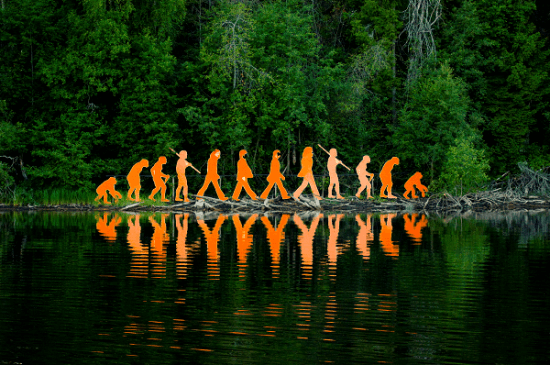
Evolution reflects the adaptations of organisms to their altering nature, which may lead to changed genes, unique features, and the emergence of new species. Both increases in gene variation and shifts in gene frequencies throughout time affect evolutionary processes. Adaptation may be studied on different scales. Species that could not adjust to the environment's changes and competition from other living forms vanished. However, many earlier species are still visible in the fossil record. All currently existent species may be linked to the simplest life forms via a continuous heritage, according to current fossil and DNA data. Worldwide, the development of photosynthesis in the most primitive plant life forms made it possible to use the sun's energy and provide the circumstances necessary for the emergence of more sophisticated life. The oxygen from this process grew in the atmosphere and created the ozone layer. The emergence of even more sophisticated cells, known as eukaryotes, was caused by integrating smaller cells into bigger ones. As colony cells grew more specialized, genuine multicellular creatures emerged. As a result of the ozone layer's ability to block damaging UV light, life colonized the Earth's surface. 17. MicrobesMicrobes were the earliest living forms to emerge on Earth, and they were the sole source of life until the appearance of multicellular creatures roughly a billion years ago. Single-celled creatures known as microorganisms are typically minuscule and far more negligible than the human eye can see. Bacteria, fungi, archaea, and protozoa are among them. These living forms can be found practically anywhere on Earth where liquid water exists, even within the planet's rocks. They reproduce quickly and often. They have an elevated rate of modification and the capacity for horizontal gene transfer, which makes them highly adaptable and capable of surviving in alien habitats. Some microbes, however, are harmful and may endanger the health of other creatures. 18. Plants and AnimalsAnimals are living entities that can move, consume food for energy, and breed. Plants are living entities that often create their own food but cannot move. Long before permanent settlements were established, humans hunted animals and collected plants for nourishment. Insects, fish, wild pigs, and deer were some of the first creatures people utilized for a living. Berries, mushrooms, and other seeds and nuts were among the plants utilized as food. Gathering and eating plants were, in a way, just as risky as killing animals until agriculture or farming were developed. Choosing the wrong berries or mushrooms for a meal might cause a person great harm or even death since many plants are hazardous to humans. Plants like wheat and rice started functioning as the core of the human diet as civilization advanced and agriculture expanded. The kinds of fruits, vegetables, and grains one could produce depended on where one lives. Different societies adopted agricultural methods from one another when people started to cross oceans and discover new continents, and they also brought back plants and seeds. New plant hybrids started to emerge, producing more dependable and bigger yields. Various animals were also controlled by humans to be consumed as food. People bred pigs, cattle, goats, and sheep, which reduced and ultimately eliminated the necessity for continual hunting. These same animals are used today to provide milk, cheese, and meat. Human Relationship with NatureThe increased exploitation of natural resources and some reduction in the danger from natural disasters have both been made possible by the human race's technological advancement. Despite this development, the future of human civilization is still largely dependent on environmental changes. The relationship between the use of cutting-edge technology and environmental changes is complicated and is now starting to be appreciated. 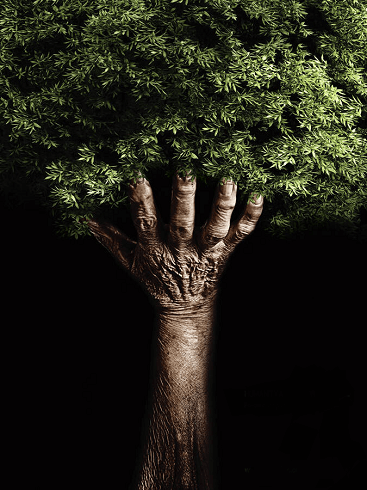
Humans use nature for both personal and commercial purposes. The global economic system's primary function continues to be acquiring natural resources for use in industry. Some hobbies, like hunting and fishing, are utilized by different populations for both Survival and entertainment. Around the 9th millennium BCE, agriculture was first practiced. Nature affects the creation of everything from food to electricity. Plants have been used medicinally by humans for thousands of years. Plant extracts are effective in treating lung inflammation, rheumatism, and cramps. Although technology has made it possible to transform natural ingredients into pills, tinctures, powders, and essential oils, the market economy and the 'authority' standing accorded to the medical fraternity have decreased the popularity of their usage. Using natural plants and extracts for therapeutic reasons is sometimes associated with the phrase "alternative medicine." Pollution, deforestation, and natural catastrophes like oil spills are manufactured hazards to the environment. Some plants and animals have gone extinct as a result of human activity. How to Protect Nature?It is our job to preserve nature for the benefit of our planet, our well-being, and the welfare of future generations. By adopting small, doable actions, every one of us can contribute to protecting the environment and the future well-being of our offspring. We often overlook how much people rely on nature. Even city inhabitants, who live in modern buildings need nature's gifts of air to breathe, water to drink, and food to consume in order to survive. While ready-to-eat foods and bottled water are available at supermarkets, they were produced elsewhere. 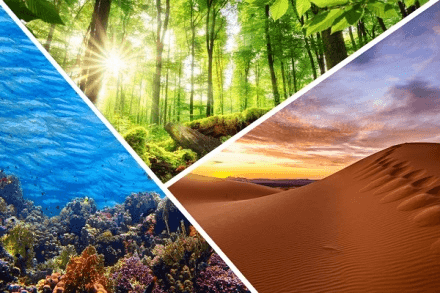
Some fruits and vegetables, for instance, can only be grown in tropical regions and must travel the world in chilled shipping containers to reach your local store at the perfect time of maturity. Since humans cannot produce enormous amounts of water in a testing facility, all drinking water originates from a natural source. The same applies to how plants clean and oxygenate the air we breathe. As a result, when we talk about protecting the environment, we also talk about protecting ourselves. The steps listed below may be very basic but they work well. Everyone can use them since they are so simple. 1. Cut Down on WasteAccording to the proverb, "Little drops make a mighty ocean." While it is easy to believe that waste reduction is an issue for large businesses and industries, and they undoubtedly have an essential role, we can all actively attempt to decrease waste in our everyday lives. Experts predict that by 2050, there will be more plastic garbage than fish in our oceans due to the annual addition of more than 8 million metric tonnes of plastic materials. Straws, plastic bottles, throwaway cups, plastic bags, and other objects used often all add to this issue. According to researchers, The environment has received around 60% of the more than 8.3 billion metric tonnes of plastic that have been manufactured since the early 1950s. 2. Use Public TransportUsing public transportation, walking, or bicycling instead of driving a vehicle is one way you can contribute to environmental protection. This will lessen your carbon footprint, enable you to exercise, and enhance your health. Imagine the sense of satisfaction you will feel when you realize that you are contributing to environmental protection and improving your well-being at the same time. 3. Grow a Tree and Maintain ItPlanting and maintaining a tree is an additional action you may conduct. An easy way to help nature is to plant one tree a year. Who does not know that trees remove carbon dioxide from the air, reducing the pollution caused by greenhouse gases. By removing and storing carbon dioxide from the atmosphere, trees contribute to the fight against climate change. In addition, they enhance the visual appeal of our communities, stop soil erosion, and help plants absorb around half of the carbon dioxide produced by humans. Trees also provide shade, which may lower the energy used to cool your house. However, always remember to care for your tree by giving it water and ensuring it gets enough sunshine. Committing to having plants throughout your home, yard, and neighborhood might also give you and your loved ones access to a cleaner, more pleasurable environment. 4. Whenever Possible, RecycleIf you look closely, you will find that many items we use regularly tend to be recyclable. You may learn about recycling possibilities in your area for plastic, paper, and aluminum containers and resolve to recycle as much as possible. Doing this could lower the volume of garbage dumped in landfills, cut down on burning process emissions, protect natural resources, and even encourage employment growth. By reducing the need to obtain raw materials for new goods and reducing the effect on the biodiversity systems of nature, recycling assists in minimizing pollution. 5. Make Use of at Least One Natural ProductWe know that most of us cannot afford to become entirely organic. However, using at least one natural product is a terrific approach to conserving the environment. You can safeguard the environment and your health at the same time by selecting natural goods. It is simple to lessen the number of dangerous substances that enter nature by using natural goods. Furthermore, using natural products will make you feel at ease since you will not expose yourself or your loved ones to dangerous chemicals. 6. Reduce Your Electricity UseUsing less power is a simple way to help protect nature. When not in use, turn off lights, disconnect gadgets, and use energy-efficient light bulbs. Traditional fluorescent lights consume more energy than energy-efficient bulbs and do not last long. 7. Cut Down on Meat IntakeConsuming less meat is one of the most effective ways to lower your carbon footprint and help the environment. The enormous contribution of livestock farming to greenhouse gas emissions has been shown by science. You are actively trying to lessen your influence on the environment when you decide to consume less meat. Please realize that this is an environmental issue rather than a religious one. 8. Use Less waterAnother easy measure you can take to preserve nature is to save water. You can save water and resources by correcting leaks, cutting off time in the shower, and using a low-flow toilet. 9. Describe Your Environmental Protection MeasuresDiscussing what you are doing to save the environment is one of the most incredible ways to inspire others to care more about nature and take steps to lessen its impacts on climate change. Speaking about the actions you are taking to safeguard nature in your area in circles of friends and on social media helps inform others about preserving nature and climate change. After saying that, always remember to be polite and considerate. 10. Contribute Your TimeThere is still more to be done, even though activists, groups, and people from all over the globe are working hard to protect the future of our planet. It will take an enormous effort to lessen the effects of the changing environment, so it needs all the help it can get. Participate in clean-up efforts in the community by volunteering. You may contribute to the long-term maintenance of your watershed. To help preserve nature, you may create gardening clubs, plant parent organizations, local garbage collection efforts, and many other excellent initiatives. Additionally, lend a hand to environmental campaigners and charitable organizations in any manner you can, whether with your time or talent. We assure you they need as much assistance from as many individuals as possible. In your free time, you can also talk to your local officials to convince them to start taking action properly.
Next TopicNuclear Energy Definition
|
 For Videos Join Our Youtube Channel: Join Now
For Videos Join Our Youtube Channel: Join Now
Feedback
- Send your Feedback to [email protected]
Help Others, Please Share










